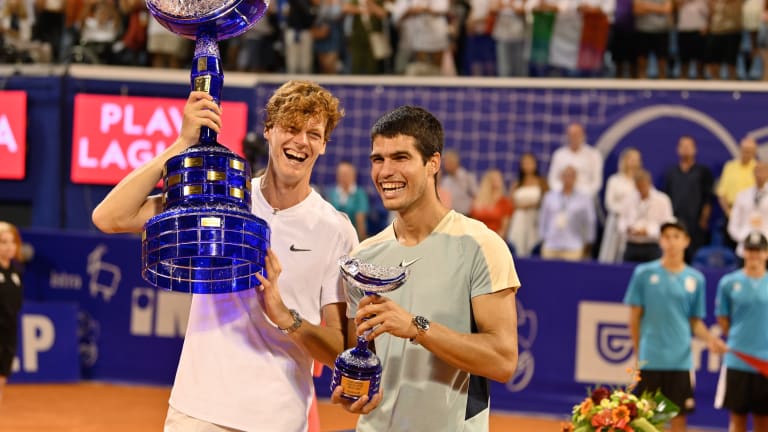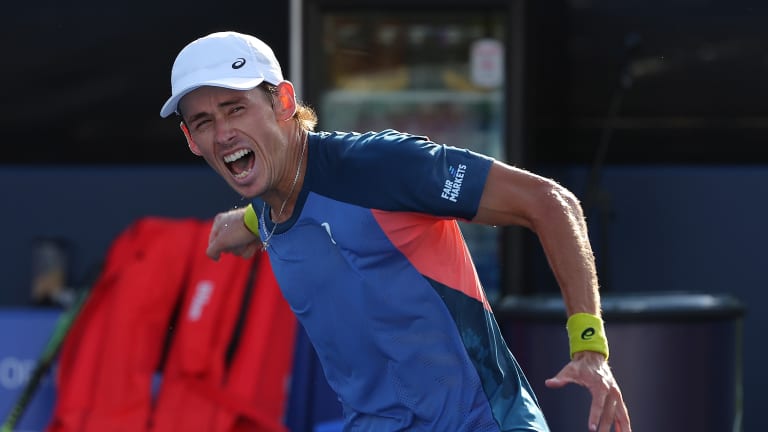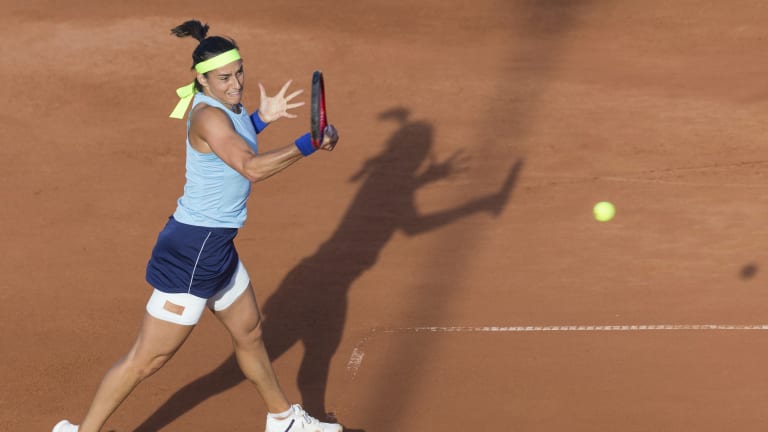ATP Umag, Croatia
Weekend Winners: Jannik Sinner claims the "Future Bowl" in Umag over Carlos Alcaraz
By Aug 01, 2022ATP Umag, Croatia
Lorenzo Musetti & Francisco Cerundolo to play for Umag title, then dash to Paris Olympics
By Jul 26, 2024ATP Umag, Croatia
Marin Cilic plays first match since January in Umag following six-month knee surgery lay-off
By Jul 24, 2023ATP Umag, Croatia
Jannik Sinner rallies to top Carlos Alcaraz in Croatia Open final
By Jul 31, 2022ATP Umag, Croatia
Top seeds Carlos Alcaraz and Jannik Sinner to clash in Croatia Open final
By Jul 30, 2022ATP Umag, Croatia
Carlos Alcaraz cruises at Croatia Open as Musetti, Baez eliminated
By Jul 28, 2022ATP Umag, Croatia
Jannik Sinner returns in Umag, ready to reinvigorate season: "I take confidence from what I achieved at Wimbledon"
By Jul 27, 2022Your Game
Geared Up: Andrey Rublev keeps letting it rip with Head and K-Swiss
By Apr 19, 2025WTA Stuttgart, Germany
Aryna Sabalenka survives day of upsets in Stuttgart as Swiatek, Pegula and Gauff all fall
By Apr 19, 2025ATP Munich, Germany
Alexander Zverev to play for record-tying third Munich title against Ben Shelton
By Apr 19, 2025ATP Umag, Croatia
Weekend Winners: Jannik Sinner claims the "Future Bowl" in Umag over Carlos Alcaraz
Meanwhile, Alex De Minaur and Marie Bouzkova leveraged good Wimbledon runs for their first titles of 2022—and Caroline Garcia backed up her Warsaw upset over Iga Swiatek with another trophy.
Published Aug 01, 2022
Advertising
Advertising

Two of Alcaraz's seven losses in 2022 have comes at the hands of Sinner.
© Sipa USA via AP
Advertising
Advertising

Five of De Minaur's six ATP triumphs have occurred on outdoor hard courts.
© Getty Images
Advertising
Advertising

Garcia jumped 10 spots to No. 21 in the Race to the WTA Finals.
© Associated Press
Advertising
Advertising

Bouzkova had previously lost her first three WTA singles finals, all in three sets.
© AP